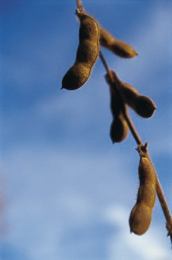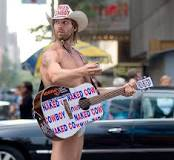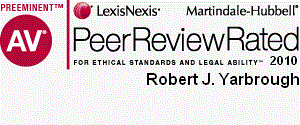Newsletter Issue 51 - May 2013
In this issue:
Trademarks for drugs
'Fair Use' of trademarks
'Abstract' invention not patentable
Ask Dr. Trademark...
(Dr. Copyright is off this month - although some might say that he's
always been a bit off - so our very own Dr. Trademark has stepped to
the plate to hit more of your burning legal questions out of the
park.)
Dear Doc.:
I was given a prescription for Noroxin to treat a UTI, but when I
got back from Rite-Aid, the bottle they gave me contained Neurontin,
which is used to treat epilepsy and pain. Somebody messed up, and
from what I read, this could have been very dangerous. Why can't
someone keep this from happening by making sure that drug names are
not confusingly similar?
Signed,
Confused Patient
Dear Confused:
Unlike regular trademarks for things like tractors, condoms and
laundry detergent, names used on drugs are supposed to be unique,
not confusing, and truthful. There is even an office at the US Food
and Drug Administration (FDA) that is supposed to approve trademarks
for drugs in an effort to prevent the over 1.3 million injuries each
year that result from drug name confusion. Even though a drug
company may be able to register a drug trademark with the Patent and
Trademark Office (PTO), that does not mean that it will be approved
by the FDA.
The FDA's Division of Medication Error Prevention and Analysis (DMEPA)
reviews all proposed names for confusing similarity to the names of
other drugs or drug ingredients, including both trademarks and
"established" or generic names. DMEPA typically rejects about
one-third of all names reviewed. Some of the issues DMEPA hopes to
avoid include names that suggest potentially exaggerated efficacy
claims; names that could lead to erroneous prescriptions (e.g.,
wrong drug or dosage); and names that look or sound confusingly
similar to other drug names.
According to the FDA, there are some ways to reduce the risk that a
name will be found misleading during approval:
• Avoid names referring to an inactive ingredient in a way that
suggests effectiveness;
• Avoid incorporating a generic name;
• Avoid names implying unique effectiveness (e.g., wonder or cure);
and
• Avoid using terms that imply maximum strength, such as "Ultra,"
"Max," "Pro," or "Super."
Similar precautions can reduce the risk of using a name that the FDA
will consider prone to cause medication errors such as names
containing numbers. For example, some pharmacists interpreted
"Percocet 5" to mean five tablets per dose. Similarly, companies
should avoid using prefixes, suffixes, and letter combinations that
may have specialized meanings in the pharmaceutical field - such as
"bid", or "PRN".
The FDA regularly tests drug names by using volunteers to assess
whether names are confusingly similar. The FDA advises that
applicants consider the sound of the name when spoken, as if
recording a verbal prescription into a voicemail system, consider
the appearance of names as printed, and consider the appearance of a
name as written by a physician.
Even after a drug name has been approved, DMEPA monitors reports of
problems with marketed drugs and can order changes in drug names it
has approved. Sometimes the FDA simply orders changes in labeling to
eliminate confusion, rather than a complete name change.
Despite all of these precautions, there are still many drug names
that are regularly confused. For a list, take a look
here. The Doc, though, hopes that you seldom need more than a
good night's sleep to cure what ails you.
The Fable of the Supreme Court and the Beanstalk
Once upon a time, a farmer purchased a magic bean. The farmer
planted his magic bean, as farmers do. The magic bean grew into a
magic beanstalk and made more magic beans. The farmer harvested the
magic beans, as farmers do, and saved the new magic beans for the
next year. For eight years, the farmer planted his new magic beans,
grew new magic beanstalks and harvested magic beans for re-planting.
Monsanto, which owned a patent on the magic bean, filed suit against
the farmer. Monsanto believed that the farmer
infringed Monsanto's patent because the farmer made copies of
the magic beans, violating the
prohibition on making or using a patented product. Monsanto's
beans were magic because they were genetically modified to survive
treatment with glyphosate herbicides. Use of the genetically
modified bean allowed the farmer to kill the weeds in the farmer's
fields using herbicides without damaging his crop.
The farmer
believed that once Monsanto sold the magic bean, then Monsanto
had no further rights to the bean. The farmer's friends
agreed. The farmer argued the doctrine of 'patent exhaustion,'
which means that once a patent owner sells a patented product, the
purchaser and any subsequent purchasers can use or sell the product
and the patent owner has no further rights to control the patented
product. In this case, the genetically modified soybeans were
twice-removed from Monsanto - Monsanto sold the patented soybeans to
farmers, the farmers planted the beans, raised crops and sold their
crops to a grain elevator, and the grain elevator sold soybeans from
the crops to Vernon Bowman, the farmer of our fable.
The case of the magic bean went all the way to the Supreme Court. On
May 13, 2013 a unanimous Court
ruled in favor of Monsanto. The Court concluded that the
doctrine of 'patent exhaustion' applies only to a particular
patented article sold, in this case each genetically-modified
soybean sold by Monsanto. The doctrine allows the farmer to plant or
eat soybeans purchased from Monsanto, to grow a crop and to sell the
crop. For soybeans that had the genetic trait and that Mr. Bowman
purchased from the grain elevator, Mr. Bowman could re-sell those
soybeans, feed the soybeans to animals or eat the soybeans. However,
'patent exhaustion' did not allow Mr. Bowman to make copies of the
patented soybeans. Otherwise, a patent for a seed could never be of
any value. The patent owner could sell the first seed, which would
then be copied by infringers, using the self-replicating nature of
the seed. The Court expressly limited the ruling to the facts of the
case, recognizing that other situations may arise with other
self-replicating inventions, such as computer programs, that might
require a different result.
The facts were favorable to Monsanto - Mr. Bowman acted to isolate
and duplicate the patented Roundup Ready® soybeans and to take
advantage of the herbicide-resistant genetic trait. He treated his
fields with glyphosate herbicide, ensuring that only soybean plants
with the Monsanto-owned trait survived. He also was familiar with
the Roundup Ready® beans and used Monsanto-supplied beans for some
of his needs.
The Monsanto patents address DNA having specific characteristics and
seed and plants containing that DNA. The Monsanto genetic
modification now has been part of the environment for years and
eventually will find its way as a contaminant into many, if not all,
soybean crops. The Court was silent on an issue raised in
friend-of-the-court briefs; namely, what happens when an organic
farmer who does not use herbicides saves seed contaminated with the
Monsanto genetic modification. Isn't the organic farmer infringing
Monsanto's patent? In a related question, how can any farmer ever
grow any soybeans without being forced to buy Monsanto's seed due to
unintentional genetic contamination? Those questions currently are
in the courts in
Organic Seed Growers & Trade Association v Monsanto.
The Naked Truth About Fair Use Applied to Trademarks
We've written a lot about the "fair use" concept in the
copyright context but did you know that there is also a fair use
concept in trademark law? Here's a case that illustrates the point.
In 2012, the Naked Cowboy (yes, you read it correctly) of New York
City fame,
sued CBS for trademark infringement when, in 2010, the network
broadcast an episode of "The Bold and Beautiful" in which a
character briefly appears dressed only in briefs, cowboy boots and
hat, singing and playing the guitar just like the real "Naked
Cowboy." We're sure you know this already, the Naked Cowboy is a New
York street musician who has built a "financial empire" by
performing in Times Square wearing only "briefs, cowboy boots, a
cowboy hat, and a guitar." He owns a registered trademark for the
words the "NAKED COWBOY" and his outfit, which is not registered, is
distinguished by the "words 'Naked Cowboy' .. displayed across the
back of his briefs, on his hat, and on his guitar...The word "Tips"
or the symbol '$' is painted on his boots." None of these
distinguishing marks appeared on the CBS character; nor was the term
"Naked Cowboy" used by the network although the terms were used in
tags and Google Adwords associated with CBS's YouTube clips of the
episode.
In his
complaint, the Naked Cowboy alleged trademark infringement and
various other federal and state law claims. CBS moved to dismiss the
law suit on various grounds, including the defense of "fair use."
The federal district court of the Southern District of New York
granted the motion. The court made three important points. First,
the CBS character did not use and, therefore, did not infringe the
NAKED COWBOY trademark; second, without any of the distinguishing
elements of the costume, the likelihood of confusion between the
Naked Cowboy and the CBS character was small; and thirdly, CBS'
reference to the Naked Cowboy on YouTube was "fair use."
The court was referring to what is known as "descriptive fair use,"
which is when an unauthorized user of a trademark uses it in a
descriptive sense. CBS's use of "Naked Cowboy" merely described the
contents of its video clips and not as a trademark to identify the
source of the video clips. Such usage created no confusion. "The
fact that the Episode's source is CBS and not [the Naked Cowboy was]
clearly evidenced by the prominent display of the series' title" and
the CBS logo on YouTube.
There is another kind of trademark fair use, which the Naked Cowboy
court did not address and that is the so-called "nominative fair
use" concept. This is an unauthorized but non-confusing use of a
trademark to identify the trademark owner's goods or services . For
example, Ford motors can have a commercial in which it compares a
Ford Taurus with a Toyota Camry. Clearly, it is using Toyota's
"Camry" trademark but it is not creating confusion over who owns the
mark. Similarly, a retailer can use another company's trademark on
its web site without a license if it is selling branded items from
the trademark owner. Pundits have written that nominative fair use
is not really a fair use concept but simply another way of
approaching the concept of whether trademark usage creates confusion
in the marketplace. In either case, the concept of trademark fair
use can keep you out of court and provide a viable defense should
you find yourself in front of a judge.
To Be, or Not To Be..
Pardon the quote of the Bard, but there is one area of patent law
that, indeed, ponders "that is the question." Bear with us for a
moment while we try to set the stage. To qualify for a patent, the
patent law statute passed by Congress states that an invention
must meet three criteria: it must be new, useful, and non-obvious.
For our present purposes, we will set aside the useful and
non-obvious qualifications. To be new, in essence an invention must
not have been thought of (or at least, disclosed) by anyone else.
Simple enough.
But the U.S. Supreme Court, as judge made law, has grafted onto
patent law the concepts that one cannot obtain a patent on a law of
nature, a natural phenomenon, or an abstract idea. For instance,
Einstein's famous equation E=MC2 is said to represent a law of
nature and, therefore, be unpatentable. Devices utilizing the law,
like the bomb, are
patentable. The idea here is that laws of nature belong to
everybody and cannot be the exclusive property of anyone, while new
applications of the law are patentable. In concept, a pretty
straight forward approach. However, recently in the biotechnology
realm, the concept of a law of nature has become twisted, contorted,
stretched, strained, and abused - but we'll talk about that another
time.
For today, we weill briefly delve into what is meant by "abstract"
although we confess up front, that we cannot give you an unambiguous
explanation. The meaning of "abstract" lies hidden under the murky
waters of patent law involving much judicial semantic nonsense
promulgated in major part by the U.S. Supreme Court. One
interpretation is that a basic idea of an invention is abstract if
it totally captures all possible uses of an idea. In this guise,
patent examiners routinely reject applications that seem to have a
mathematical expression at their core, especially computer and
software implemented inventions. One
court has recently expanded the concept of what may be abstract
to the analysis of a method for hedging risk in financial dealings
between two parties. Lest you think that we are ducking a good
explanation of abstract, another federal appellate court recently
decided (CLS
Bank Int'l v. Alice Corp.) such a hedging idea was abstract, but
could not articulate a consistent interpretation of why. In fact,
seven different opinions were filed including at least three
different tests for evaluating patent eligibility. Like pornography,
the courts seem to know "abstract" when they see it.
Which brings us full circle: To be (abstract) or not to be
(abstract), that is the question.

